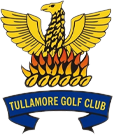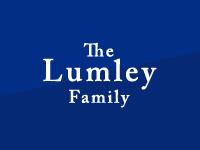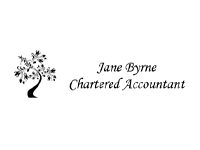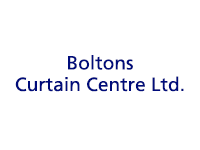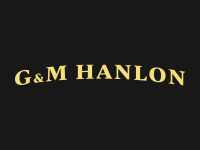Tullamore Golf Club has been situated at ‘Brookfield’, which is part of the Charleville Estate since 1926.
It is here, surrounded by large numbers of mighty oak and beech trees, many of which were planted as a relief scheme during the Famine, that Tullamore GC with a current membership of over 1,000 has become one of the top rated parkland courses in Ireland.

It is generally accepted that the game of golf was introduced to Tullamore in 1886 by Col. R.A. Craig, a brother of Rev. Graham, Rector of St. Catherine’s at Hophill on the Geashill Road. A few holes were apparently laid out in the fields behind the Rectory and this represented the first golf links in the neighbourhood and there Col. Craig and a few friends drove their ‘gutty balls’ with the old fashioned clubs of the time.
The scene changed to the fields near an old ruin behind the distillery (what is now Marian Place), where they were joined by a few military officers, then stationed in the town. It is thought that the old stone wall at the right hand side of the ‘Bridge House Hotel’ car park may be all that remains of the above mentioned ‘ruin’.
By 1894 a move by the Tullamore golfers to Tinnycross had taken place. “This ancient and fascinating sport is about to be tried in the Tullamore quarter. With this in view a good practical committee has been got together comprising Rev. R.S. Craig, Messrs David Sherlock D.L., Geo. J. Hoey and Richard Bull”. Kings County Chronicle of 3rd Jan. 1895
By the end of 1895 or early 1896 the next move was effected to the racecourse at Ballykilmurry, where a pleasant 9-hole course was laid out and a small pavilion was erected. The earliest known General Meeting of Tullamore Golf Club is reported in the Kings County Independent of Nov. 7th 1896 as having taken place in Browne’s Hotel, High Street, on Monday 2nd November:
“There was a large and representative attendance of members. The proceedings were of an enthusiastic and earnest nature, each being resolved to make the coming season the most successful since the establishment of the club. Mr. J. Williams was moved to the chair and amongst those present were, Rev. R.S. Craig , Captain ; Dr. McMichael , Messrs A.R. McMullen, TCPLG, Honorary Secretary ; Richard Bull, Sub-Sheriff ; T. Blackham, Treasurer ; P. Egan JP ; G.W. Wade, J. Green. …. After some deliberation it was decided to have a new and commodious pavilion erected on the golf grounds at Ballykilmurray. The construction of both will cost about 35 pounds. Up to the present the grounds were devoid of these accessories, a humble bicycle shed being the only structure in the place. The improvements decided on will shortly be commenced, and a most enjoyable season for the Tullamore Club is anticipated.”
William H. Gibson in his book, “Early Irish Golf” gives the institution date of Tullamore G C, as 1896 and affiliation to the GUI in 1899. This is also confirmed by William Menton, (Golfing Union of Ireland 1891-1991).
The Club is listed in the ‘Golfing Annual’ for the first time in the 1899-1900 edition and appears in subsequent years. The 1906-1907 edition names J.W.E. Dunsterville as Captain and J.P. Hunter, as Hon. Secretary. This last piece of information causes a small dilemma as the ‘Captains Board’ in the clubhouse lists Isaac Williams as Captain for 1906. It may well be that 1905 was the year in which Dunsterville was Captain.
Gibson in ‘Early Irish Golf’ refers to 6th March 1906 as being a revival date for the Club, – due to a lapse in interest in the game for some years prior to that date. It may have been that the Club continued in existence without having the use of land on which to play the game. The significance of the 6th March 1906 is that this is the date at which golfing activities commenced at Screggan on lands owned by Captain E.J.M. Briscoe and this was to be the home of Tullamore Golf Club until 1926.
The most reliable account of the move comes from a speech delivered by W.S. Corry, Club Captain, at the opening of the new clubhouse in Brookfield in September 1926. As reported by the ‘Offaly Independent’ of 25th September 1926, Mr. Corry went on to say,
“Unfortunately there was no record of what really happened at Ballykilmurray, despite efforts to find the minute book. The time came when they could no longer play golf at Ballykilmurray and they had to look out for ‘pastures new’, in which to enjoy the game, and after some time they succeeded in getting the course at Screggan. Motoring in those days was not so prevalent as now and he remembered – being attached to the old club at Ballykilmurray – Mr. Morton, Governor of Tullamore Jail – a most respected member of the club – going on a cycle tour through the county, and in the course of that tour he discovered Screggan. Captain Briscoe, the owner of the land was approached, and gentleman that he was, he said: “Not only can you have the pleasure of playing golf at Screggan, but you can have it free of all rent, and, what is more, I will join your club and be a faithful member.”
In the first year of the Club at Screggan the membership was 54, – thirty eight gentlemen and sixteen ladies and with a total income for the year of £47-18s. Mr. Corry referred to Mr. Isaac Williams as being Captain in 1906.
The Briscoe family had owned land and the manor at Screggan since the late 1700’s. Captain E.J.M. Briscoe had taken up residence at Screggan Manor following his marriage in 1891 and was later appointed as Justice of the Peace for King’s County. Captain Briscoe held the office of Club President from 1906 until 1927. He also helped out the Club as acting Honorary Secretary in 1913.
The oldest Trophy in Tullamore Golf Club is the ‘Briscoe Cup’, and it is still played for every year. Captain Briscoe may well have presented this fine silver cup in 1906, the inaugural year of the Club at Screggan, while the earliest recorded winner as given in ‘The Golfing Annual’ 1909/1910, was R. Jackson in 1907.
Captain Briscoe’s importance to the development of Tullamore Golf Club cannot be overstated. By providing the lands at Screggan rent free for so many years and obviously helping with the laying out of the course and assisting with the running of the Club at a time when it was struggling to establish itself was of great significance.
The growth of the Club continued over the next few years and by 1914, Nisbet’s Golf Year Book records a membership of 140. This must have been very satisfactory for the Club and this is the first note of an entry fee of £1-1s in addition to the annual sub of £1-10s for men and 10s/6d for ladies. The Golfer’s Handbook records a membership of about 200 in 1919.
Given the prevailing circumstances in Ireland from 1919 onwards it is not surprising that the Club considered relocating to a site nearer Tullamore town. During the ensuing troubled times the pavilion at Screggan was vandalised and subsequently destroyed by fire in 1922 as was Capt. Briscoe’s Screggan Manor and Brookfield House in the Charleville Estate.
At a committee meeting on 9th Feb. 1921 the Hon. Sec. H.F. Brenan was instructed to write to Lt. Col. Bury asking for permission ‘to construct a golf links in Charleville Demesne (if same suitable).’ This was the first step in a lengthy process that led to the Club relocating to Brookfield by the beginning of 1926.
The Club had a strong preference for the Charleville Demesne and employed Mr. Cecil Barcroft of the Royal Dublin G.C. to choose a site and draw up a course layout map. This was not to be as the owners were not in favour and offered instead the site at Brookfield, part of the estate but outside of the demesne.
Subsequently, Captain Lionel Hewson, an experienced course designer, laid out 18 holes in Brookfield and work commenced on his plan in the summer of 1925 under the supervision J.S. McCann, (Club Captain 1925). It was recognised that there would be changes to the layout, so no bunkers featured initially. Mr. F.E. Davies of Milltown G.C. gave advice on this matter and a complete scheme was carried out between 1926 and 1928.
The official opening of the Brookfield Course and new pavilion took place on 22nd September 1926.
In 1927 both the Ladies and the Men won their respective sections of the Midland Counties Trophy. There was to be further success in 1934 when the Provincial Towns Cup was won for the first time. In the intervening years development of the course continued and there was a steady increase in membership. Dr. John O’Meara was the first member of the club to play off scratch and reached the final of the West of Ireland Championships in 1931 only to lose by 6 and 4 to the Irish International A.W. Briscoe. The Club purchased its first tractor in 1937 for £210.

In 1938 the Club invited James Braid, a 5 times British Open winner, to visit Tullamore and inspect the course and recommend what changes should be made to improve the overall standard of Brookfield. This was to be of significant benefit, as Braid suggested 4 complete new holes among other changes which also included a bunkering plan. The bulk of the work on the course was carried out over a three year period. The final part of Braid’s plan, a new 18th green was not completed until 1945.
No different to many other golf courses the landlord had the right to graze sheep on the course. As fertiliser was not always easily available, the sheep droppings were gathered up, mixed with water, and the resulting solution spread on the greens.
Christy Kane, professional, who had started with the Club in March 1942, was informed in May 1944, that due to financial difficulties, his services would have to be dispensed with on 31st July 1944. Owing to the difficulties with supplies of kerosene it was decided to sell the tractor in December 1943. Horses were again to be used with the course machinery.
1947 saw the emergence of Miss Catherine (Kitty) Smye onto the national golfing scene when she featured in the Leinster Scratch Cup and reached the final of the Irish Ladies Close at Portrush.
Kitty was to be a strong force in Irish golf for the following 20 years, the great achievement of her golfing career was the winning of the British Open Amateur Championship in 1951 (as Mrs Kitty MacCann). The fifties were somewhat of a golden era for the Tullamore Ladies. In addition to Kitty MacCann (nee Smye), Irene Holland (nee Hurst) and Moira Earner (nee Mahon) also played for Ireland at senior level. Kitty MacCann won the Irish Ladies Close Championship in 1949 and 1961.
John E. Kelly was appointed Club Professional in 1950 and remained in this post for 44 years until his retirement in 1994. During his time with the Club he served as Captain of the IPGA in 1967 and ’68. Three professional tournaments were played in Tullamore in this period, the Michael Moran Cup in 1955 and the Irish Professional Golfers Association (IPGA) Championship in 1967 and 1970. Hugh Boyle was the winner of the latter on each occasion. A tournament in honour of his 40th year in Tullamore was held in 1990 and both Fred Daly and Harry Bradshaw were in attendance .John’s family generously donated a seat in his honour which now sits at the 1st tee.
It was the turn of the men in the sixties to further enhance the reputation of Tullamore G.C. Eric O’Brien was capped 6 times for Ireland in 1963, and got to the final of the Irish Close in Killarney the same year, only to lose to J.B. Carr on the 35th hole by 2 & 1. Denis White who had joined the club in 1965 was rapidly establishing a golfing reputation and another was Paul Burke, who had come through the junior ranks. Aided by Bryan P. Malone and Tony Tynan who had both joined in 1966, there was now a formidable combination in the Club. In 1967 Tullamore was the first club outside of the metropolitan area to win the Leinster Final of the Barton Shield. Malone, an Irish International Golfer from 1959, won 6 scratch cups in 1967.
The Provincial Towns Cup was won in 1934, 1964, 1970 and 1980. The South Leinster Trophy was won for the first time in 1962, further victories followed in 1967, 1969 and 1971.
A major restructuring of the clubhouse was carried out in the early 1960s, moving away from what had been virtually unchanged since 1926 to a more modern facade. The interior layout included new locker rooms for both men and ladies.
The new 50 year lease agreed in 1968 had the main advantage to the Club 0f the removal of the sheep from the course.
In the 70’s the Club hosted the Irish Youths Open Amateur Championship on four occasions and the Irish Inter-Schools Golf Championship twice.
The inaugural Irish Independent Mixed Foursomes was won in 1972. This competition became the Irish Mixed Foursomes in
1978 when Ulster joined the other three Provinces. In 1976 there were two further major successes for the Club. Denis White won the East of Ireland Championship at Co. Louth and the much coveted Barton Cup was won, following a tough campaign, with victory over Lucan. The Cup was not to be won again until 2007 although the final was reached in 1989.
Sean Flanagan represented the club with distinction on the winning Irish Youths team at the European Amateur Golf Championship in Oslo in 1977. Vincent Twohig, a schoolteacher from Cork played 10 times for Munster whilst a member of Tullamore G.C. in the early 1980s. The Irish Junior Cup was won amid much celebration at Royal Co. Down in 1983.
Donagh McArdle succeeded John Kelly as Club Professional in 1994. At the 1996 AGM full membership was made available to the Ladies and those ladies who wished to remain as associate members were allowed to retain their status.
The course was to remain largely unchanged until 1995 when under the direction of Patrick Merrigan, Golf Course Architect, seven new greens and three lakes were developed with over a thousand new trees planted and some unused ground to the right of the 12th hole was brought into play. The redesigned course was opened to much acclaim in September 1996, the centenary of the founding of Tullamore Golf Club in 1896. The course now started at what was then the 6th hole and coincidentally the first tee was again where it had been in March 1926 when the Club arrived at Brookfield. In 2007 Patrick Merrigan oversaw a redesign of the 16th hole which included new stone walls at the river in front of the green. New bridges were built at the 15th and 18th holes.
The new modernised course had an immediate beneficial effect. The Leinster title in the Jimmy Bruen Shield was won in 1997. The same year the Ladies won the Midland Plate and Una Marsden was selected on the Irish Girls International team. Enda McLoughlin represented the club at Boys Interprovincial level for Leinster and was followed a few years later by Eoin Marsden. Mark Murphy took up the post of Course Manager in 1998 and he has brought the layout to the high standard that is the envy of many other clubs.
Having lost out at the final stage in the All-Ireland final of the Irish Mixed Foursomes in 1999 at Strandhill, the Club went on to capture the All-Ireland pennant with victory over Limerick County at Dundalk in 2000. In 2006 the Junior Boys Under-15 team won the Leinster title, reached the final in 2007, and won again in 2008. The Under -18 Boys reached the Leinster Final of the Fred Daly Trophy in 2007 and 2008, but unfortunately lost on both occasions. The Barton Cup was regained in 2007 as well as the Leinster Section of the Jimmy Bruen Shield.
The Club hosted the All-Ireland Cups and Shields Finals in glorious weather in September 2009. Despite best efforts Tullamore were unsuccessful in having a team in the finals. There were many favourable comments on the high standard of the course.
Another milestone in the long history of the Club was passed in 2010 when Jo Barber-Loughnane became the first lady to be elected Club President. In 2010 the total membership stood at 1125, representing 742 adult members, 66 students, 240 juniors and 77 social and honorary members.
Stuart Grehan became the Club’s most successful golfer when in 2015 he won both the East and South of Ireland Championships played as stroke play and match play respectively. An Irish cap followed when he assisted Ireland in retaining the Home Internationals and he was on the team again in 2016 when they retained the trophy for the third year in a row. Numerous representative honours followed in 2015 & 2016 including a member of the St Andrews Trophy team (GB&I team) that defeated the USA, he was a winning member of the Arnold Palmer European (Universities) team that defeated the USA, the Irish European Nations Cup team winners. In 2017 he won the R&A Foundation Scholars Tournament by 3 shots at St Andrews and reached 54th place in the World Amateur Golf Rankings (WAGR), the highest ranking Irish Amateur Golfer.
However, probably his most memorable achievement to date was as part of the Irish Team that won a bronze medal at the World Amateur Team Championship in Mexico in 2016, the highest playing ever by an Irish team.
Tullamore Golf Club has come a long way from the introduction of the game of golf to Tullamore in 1886 by Col. R.A. Craig g and his friends in that field on the Geashill Road.
The history of Tullamore G.C. was not documented for its Centenary in 1996 but this was put right when in March 2011 Tullamore Golf Club – A History 1896 – 2010 was launched in the clubhouse and this 280 page book is a great record of golf at Tullamore down through the years.
Copies of the History are available for purchase for €10 at the bar.
